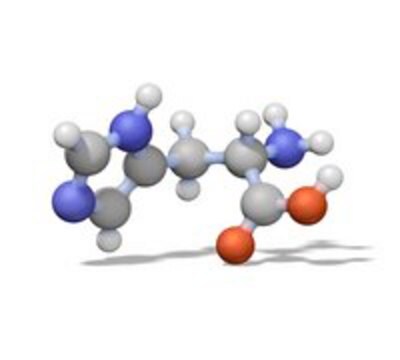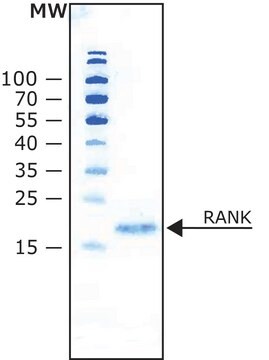T6522
Trypsin inhibitor from Glycine max (soybean)
powder, BioReagent, suitable for cell culture
Sinónimos:
SBTI
About This Item
Productos recomendados
biological source
Glycine max (soybean)
Quality Level
type
Type I-S
product line
BioReagent
form
powder
specific activity
(One mg will inhibit 1.0-3.0 mg of trypsin with activity of approx. 10,000 BAEE units per mg protein.)
mol wt
20.1 kDa
concentration
10 mg/mL
technique(s)
cell culture | mammalian: suitable
solubility
balanced salt solution: 1 mg/mL
serum-free medium: soluble
shipped in
ambient
storage temp.
2-8°C
¿Está buscando productos similares? Visita Guía de comparación de productos
Application
Biochem/physiol Actions
Components
Unit Definition
Preparation Note
Solutions can retain activity when stored short-term at 2-8° C. Solutions are stable in frozen aliquots at -20°C.
Analysis Note
signalword
Danger
hcodes
Hazard Classifications
Resp. Sens. 1 - Skin Sens. 1
Storage Class
11 - Combustible Solids
wgk_germany
WGK 3
flash_point_f
Not applicable
flash_point_c
Not applicable
ppe
Eyeshields, Gloves, type N95 (US)
Certificados de análisis (COA)
Busque Certificados de análisis (COA) introduciendo el número de lote del producto. Los números de lote se encuentran en la etiqueta del producto después de las palabras «Lot» o «Batch»
¿Ya tiene este producto?
Encuentre la documentación para los productos que ha comprado recientemente en la Biblioteca de documentos.
Los clientes también vieron
Protocolos
Enzymatic Assay of Trypsin Inhibitor
Chromatograms
application for HPLCNuestro equipo de científicos tiene experiencia en todas las áreas de investigación: Ciencias de la vida, Ciencia de los materiales, Síntesis química, Cromatografía, Analítica y muchas otras.
Póngase en contacto con el Servicio técnico









